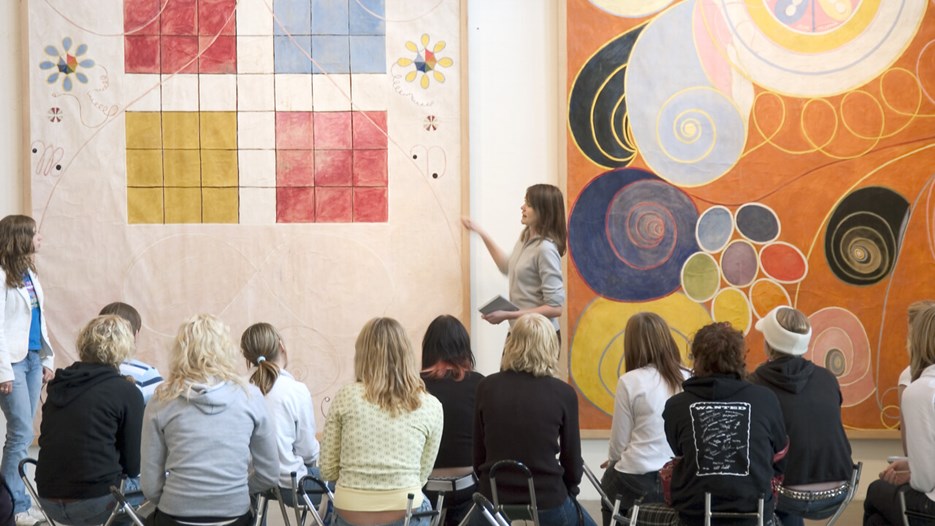
View from the exhibition Hilma af Klint / Geometry and Spirituality at Bildmuseet 2004-06-06 2004-10-17.
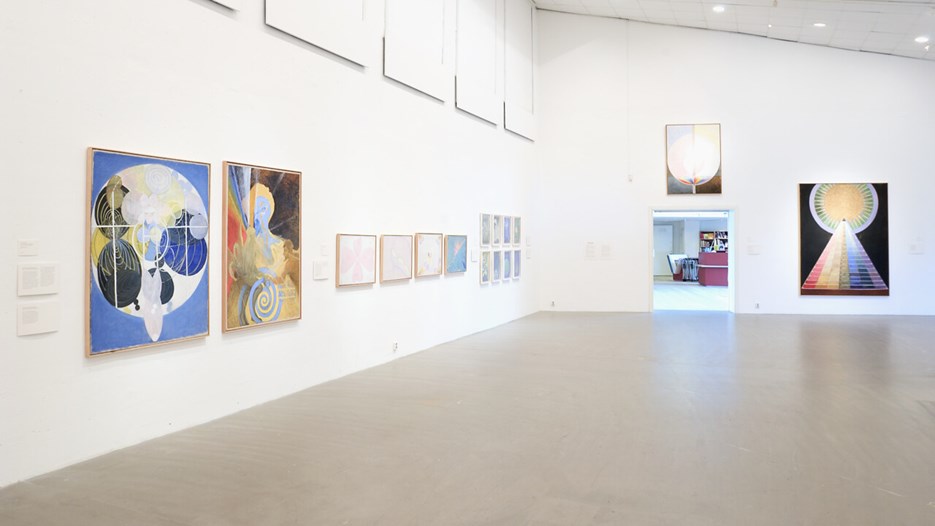
View from the exhibition Hilma af Klint / Geometry and Spirituality at Bildmuseet 2004-06-06 2004-10-17.
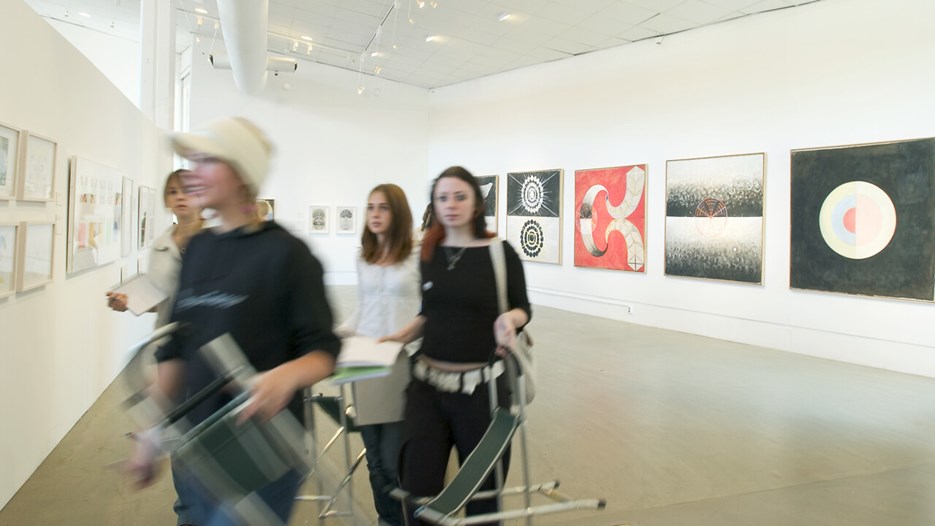
View from the exhibition Hilma af Klint / Geometry and Spirituality at Bildmuseet 2004-06-06 2004-10-17.
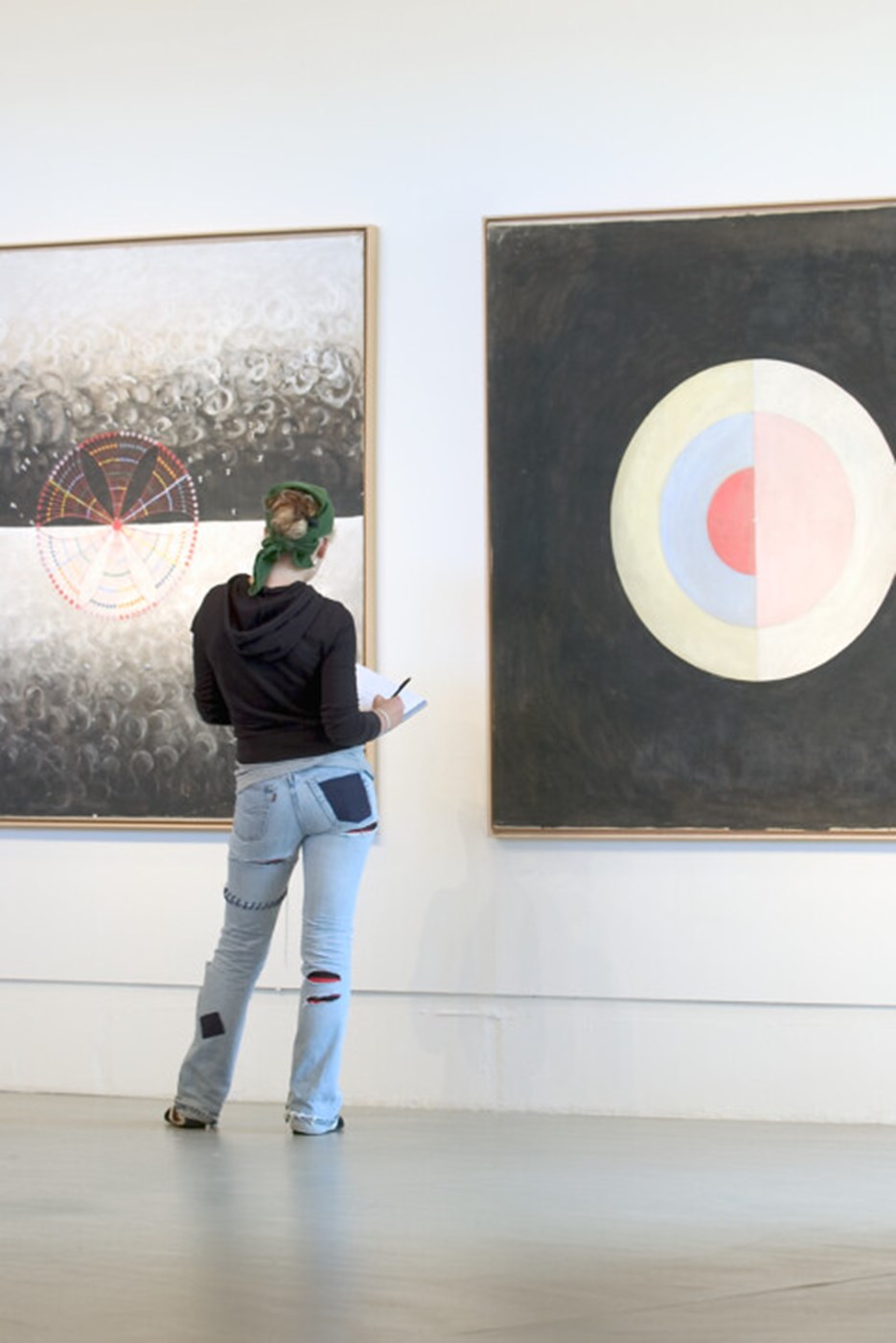
View from the exhibition Hilma af Klint / Geometry and Spirituality at Bildmuseet 2004-06-06 2004-10-17.
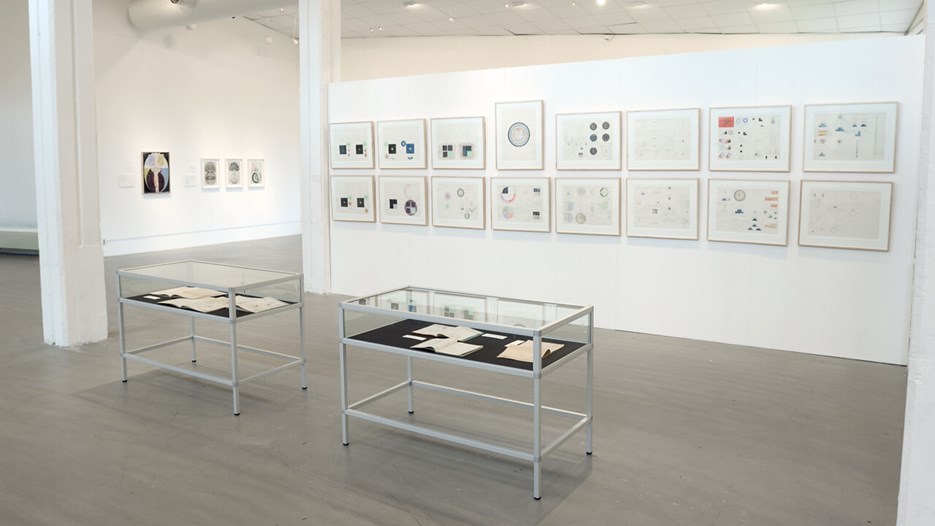
View from the exhibition Hilma af Klint / Geometry and Spirituality at Bildmuseet 2004-06-06 2004-10-17.
Bildmuseet is exhibiting a selection of paintings and drawings by Hilma af Klint from 1906 to 1933. This collection highlights her interest for and knowledge of geometry and mathematics. The artist’s ambition to define the existence that is not visible is most apparent in a series of images form 1919, which are now being shown to the public for the first time.
When the Swedish artist Hilma af Klint (1862-1944) began with non-figurative painting in 1906, this occurred completely in isolation from the pioneers of abstract painting and the groupings of established modernism on the continent. Her break with her classical schooling from the Royal Academy of Fine Art's in Stockholm, which ended in 1887, was preceded by several years of searching for self-knowledge as a member of the group De fem (The Five). The group was influenced by the period’s spiritual movements, particularly theosophy and the philosophy of Rosenkreutz and later Anthroposophy.
The exhibition Geometry and Spirituality includes 80 works that highlight her ambition to depict spiritual existence, the different levels of matter, but also characteristic and moralistic features of individuals. Her central works Paintings for the Temple, which were produced during the years 1906-1915 and consist of 182 painting divided up in a number of series, makes up a significant part of the exhibit. The paintings, filled with symbols, signs, geometric shapes and fragments of figurative objects, came about entirely or partly mediumistically, that is to say, from instructions from Higher Powers. af Klint kept detailed notes of the instructions she received, and she also wrote down her own thoughts concerning her works.
Hilma af Klint’s own writings also receive significant attention in the show. The writings have been chosen together with the author Gurli Lindén. In the books Vägen till templet (1996) (The Road to the Temple) and Enheten bortom mångfalden (1999) (Unity from Diversity), Lindén examined more closely af Klint’s writings, the majority of which are unpublished.
Hilma af Klint was never interested in selling her paintings or drawings. At her death in 1944, she willed her belongings to her nephew Erik af Klint. The will specified that her works should not be shown publicly until 20 years after her death.
It took, however, 40 years before Hilma af Klint’s art was first shown to the public at an exhibit on spiritual art in Los Angeles in 1986. The first large separate exhibition in Sweden was in 1989 at Moderna Museet in Stockholm. In 1998, Södertälje konsthall had a large exhibit with focus on her anthroposophic period. The entire Paintings for the Temple series was shown at the Liljevalchs konsthall in 1999.
Today, the collection is owned by the Hilma af Klint Foundation.